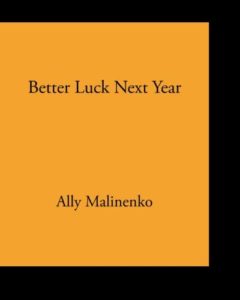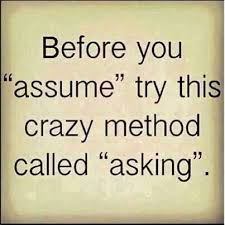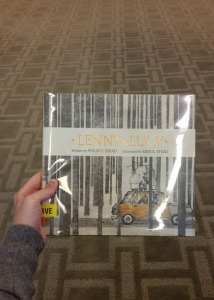
Better Luck Next Year. By Ally Malinenko. Pittsburgh, PA: Low Ghost Press, 2016. $10.00 (pa)
Reviewed by Mike Good
Better Luck Next Year offers a candid first-person account of the poet’s breast cancer diagnosis and her life after the diagnosis. The speaker and Malinenko appear as interchangeable as speaker and author can be. This book represents author’s third collection of poetry and the sixth release from Pittsburgh’s Low Ghost Press.
I do not think I am alone in believing that cancer is terrifying; cancer pervades language, metaphor, and lurks hidden behind health-crazes, super foods, and antioxidant-rich fruit incessantly marketed in every aisle. However, cancer is not afraid of me. I can do little but run from it. Cancer, while especially well researched, appears to me like any number of things in our world—determined by chance, environment, a few inevitable, personal decisions, and the decisions of others. The fact is I prefer to avoid thinking about it altogether. While it has not touched me, it has touched many people that are close to me and many people are close to me no longer, as they have grappled with losses I never learned to fathom. Yet, sometimes, I am forced to reckon with cancer—especially when I picked up Better Luck Next Year.
According to cancer.gov, 1,685,210 new cases of cancer were diagnosed in the United States in 2016. Nearly 600,000 Americans died. As William Carlos Williams famously writes, “It is difficult/to get the news from poems/yet men die miserably every day/for lack/ of what is found there.”
We learn, in our America, in Malinenko’s America, it is neither cheap to be sick, nor does the fight feel noble, and outcomes rarely appear to be within control. This books asserts that whatever else poetry might do, it must not look away from cancer, but rather look closer. Malinenko acknowledges the difficulty and controversy of this subject for poetry, pulling the leading epigraph from Susan Sontag’s Illness as Metaphor and AIDS and Its Metaphors, written originally, forty years ago, in 1977. Sontag writes in her explication, “Cancer is a rare and still scandalous subject for poetry; and it seems unimaginable to aestheticize the disease.” From there, the reader must take a deep breath and dive into the world the book creates.
In the leading poem “The Day Before”, the speaker reflects on her life and identity before the exam that leads to her diagnosis. Her identity is entwined to a poetry reading. The poem offers a farewell to her friends as it introduced the book, “…and I didn’t know it then/but I was saying goodbye for good/to all of you, yes/ but also to me/because/this me/now// is not me// I don’t know who she is…” Poems record her confirmatory biopsy and follow her through chemotherapy and surgeries, depicting the impact of cancer on her marriage, her everyday challenges, her adaptations, and her struggles. Arguably, the trajectory is like the archetypical hero’s journey—from innocence to worldliness; the writer negotiates preconceptions about what it means to be diagnosed, experiences her own reality with cancer, aims to navigate it, and to survive not only the illness, but also the unmistakable alteration of her self. However, like the speaker, we do not know if there is a happy ending, and the book’s final poem is pensive. In some ways, the book functions as a record of trauma, a hopeful prayer that hesitates to be spoken—the prayer that everything could still be fine, despite the odds, and, though hidden, better luck may be around the corner.
While many of the elements I look for in poems occur in droves, many are not to be found in Better Luck Next Year. Lines and stanzas are not divided by sound, stress, syllabically, or visually, and rarely add tension to the sentence or multiply meaning. Rather, margins impel the narrative forward, stanzas often break to show passage of time, and syntax organizes lines to keep the reader’s eye moving downward, often functioning as punctuation. The style suggests that is almost better to read this collection as one long poem, or as a series of flash essays, than as an arrangement of individual poems. However, it reads wholly unguarded; that alone is refreshing. Malinenko recalls Beat poets like Elise Cowen and Diane di Prima. Take, for instance, the first stanza of “Surgery #1” that occurs in the first half of the book, implicitly addressed to the speaker’s husband who has become her caretaker:
Careful, you say
stepping gingerly around me
as I shiver
half in the tub
half out
naked
my hair sopping wet
the soap running
down my back
as you wash my hair
because I cannot.
As there is no road map to write a book about illness, there is no road map to write its review. Rather, it is best to listen to it. This book will haunt and arrest the reader that embraces it, and I encourage you to do so, and to be prepared: this is an intimate book, and Malinenko is intimate with her reader. While Better Luck Next Year oscillates between memoir and poetry, all poetry must, in some way, walk this tightrope, and I celebrate this book. What other medium can aspire to tell the impossibly intimate, but poetry?
Mike Good is a founding editor of the After Happy Hour Review and edits the poetry. He has an M.F.A. from Hollins University. Find more at mikegoodwriteswordpress.com
Share:




